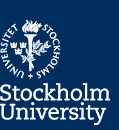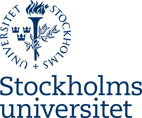Biogenesis of pre-mRNA/mRNA
Gene expression includes multiple complex processes that are tightly linked and coordinated. Intimately coupled to transcription, precursors to mRNA (pre-mRNAs) associate with distinct protein complexes or RNA-protein complexes, so called molecular machines. These machines modify the pre-mRNA and determine the fate of the resulting mRNA.
At the 5'-end of the mRNA, the Cap-structure and the Cap Binding Complex (CBC) are added. At the 3'-end, the 3' processing machinery cleaves and polyadenylates the transcript. Most eukaryotic pre-mRNAs contain introns. The introns are removed, and the exons joined together, during the splicing reaction. The splicing machinery, the spliceosome, performs the splicing reaction either constitutively or in a regulated manner. The spliceosome assembles co-transcriptionally on the nascent RNA transcript and many, but not all, introns are excised during ongoing transcription. Data suggest that spliceosomal components come and leave the growing pre-mRNA during transcription elongation. It is still unclear how correct exon/intron borders are identified in a pre-mRNA. A group of Serine-Arginine rich proteins (the SR proteins) helps to recognize splice sites and it has been shown that they are essential for several steps during the splicing reaction and also for later steps in the life of mRNA molecules. The small nuclear ribonucleoprotein particles (snRNPs) play important roles in the chemistry of the splicing reaction. Splicing is coordinated with transcription and with other pre-mRNA processing events.
In addition, also other proteins associate with the pre-mRNA. These proteins are e.g. responsible for export and quality control of the mRNA. The processed mRNA, associated with proteins, forming an mRNA-protein (mRNP) complex, moves from the gene locus through the interchromatin to the nuclear pore complex (NPC) in a non-directed manner, probably by diffusion. At the nuclear pore, the mRNP docks and subsequently translocates through the central channel of the NPC. Export of mRNP to the cytoplasm involves interactions between export proteins and nucleoporins, lining the central channel of the NPC. At several steps during the biogenesis of mRNA, the quality of the mRNP will be controlled.
Our aims
We are interested in the biogenesis of mRNAs in living cells. All mRNAs are produced as precursors (pre-mRNAs) that have to be modified in several maturation processes and associated with proteins to form mRNA-protein (mRNP) complexes. We wish to understand how the mRNPs are produced, processed and transported to the cytoplasm. To ensure efficient synthesis, quality control and export of mRNPs, molecular machines need to be highly coordinated when they carry out these processes. We would like to know which molecular machines are involved, what they consist of, how they are assembled, how they function and how they are reused. We use model systems offering different experimental possibilities in our studies (mainly insect and mammalian cells). For in situ analyses, we mainly use a specific biological model system, the salivary gland cells in a dipteran organism, Chironomus tentans. In these cells, we can analyze the complete chain of intranuclear events in gene expression for specific genes in intact cell nuclei. The cells have exceptionally large cell nuclei. The nuclei have polytene chromosomes, containing a family of tissue specifically transcribed genes, the Balbiani ring (BR) genes. These genes can be visualized in the intact cell and the mRNPs produced from these genes can be studied in the electron microscope during transcription, during mRNA-protein complex formation and during intranuclear transport to and through the NPC. It is therefore possible to uniquely analyse intranuclear events during biogenesis of mRNP from specific endogenous eukaryotic genes in vivo.
Biogenesis of ribosomes
Ribosomes are highly conserved in all organisms. In eukaryotic cells, ribosomes are made in the nucleolus inside the nucleus and subsequently transported to the cytoplasm. The biogenesis of ribosomes is essential and costly for the cell. In the yeast S. cerevisiae, there are about 2 million ribosomes per cell, and each minute, about 2000 ribosomes are replaced. In the nucleoli, the ribosomal genes are transcribed by RNA polymerase I into a large precursor RNA (pre-rRNA). This pre-rRNA is then cleaved, chemically modified, folded and associated with the ribosomal proteins. It is therefore expected that ribosome biogenesis is a highly regulated and coordinated process. The processing events require a large number of molecules, including small nucleolar RNAs (snoRNAs) and proteins, which interact with the pre-rRNA. Initially, a large 90S pre-rRNA-protein complex is formed. This complex is processed and cleaved and via several intermediates, the small ribosomal subunit (40S) and the large ribosomal subunit (60S) will finally mature and become functional in the cytoplasm.
Our aims
We wish to understand how ribosomes are formed from the pre-rRNA. In particular, we wish to know how the pre-rRNA is folded in a correct manner to allow cleavage and chemical modification reactions to occur at the same time as the pre-rRNA folds and binds the ribosomal proteins resulting in the final compact ribosomal subunits. Specifically, we study the function of Mrd1p to understand these processes. We therefore analyze the molecular interactions Mrd1p is involved in, with other proteins and/or with pre-rRNA and other RNA molecules. We also study the structure-function relationship for Mrd1p. In our studies we use S. cerevisiae because it allows detailed molecular analyses of ribosome biogenesis, a highly conserved process in eukaryotic organisms.




